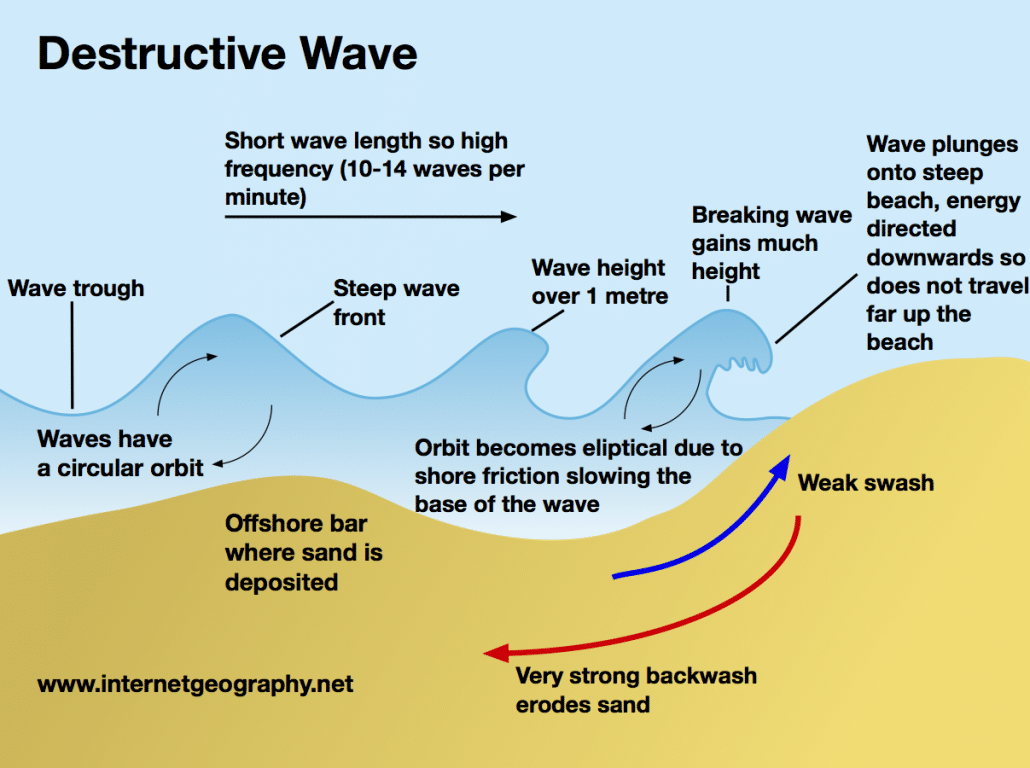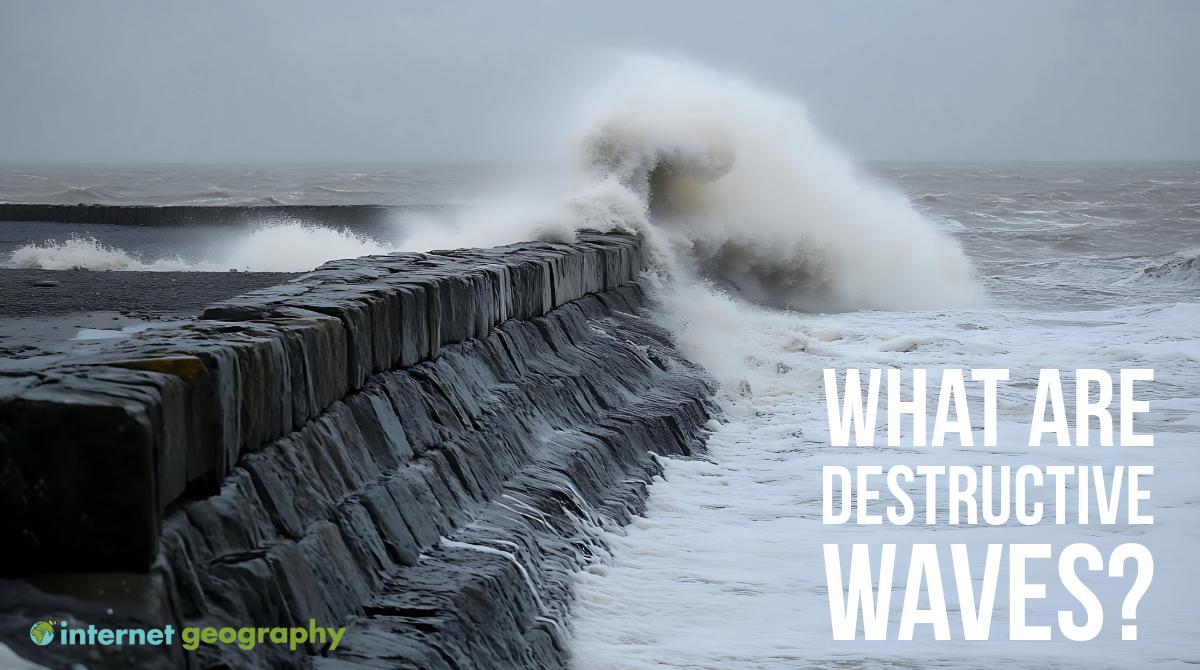What are destructive waves?
Destructive waves destroy beaches. The waves are usually very high, have a short wavelength and are very frequent. They have a steep front and are typically over 1 metre tall. As destructive waves approach the coast, they gain height, plunge onto a steep beach, and do not travel far up it. The swash is very weak, whereas the backwash is strong. This leads to a net loss of beach material. Although a destructive wave’s swash is much stronger than a constructive wave, its backwash is much weaker than its swash. These waves can transport beach material back into the sea, creating a steep beach profile.
They are more common in winter than in summer and are usually found in more exposed areas. The force generated by a destructive breaking wave can erode a headland.

The characteristics of a destructive wave
Summary
Flashcards
Coming soon
Quiz
Coming soon

